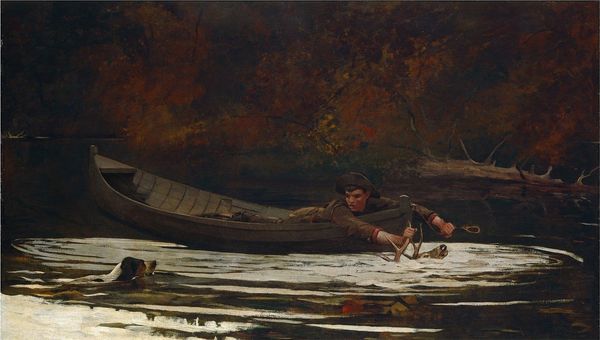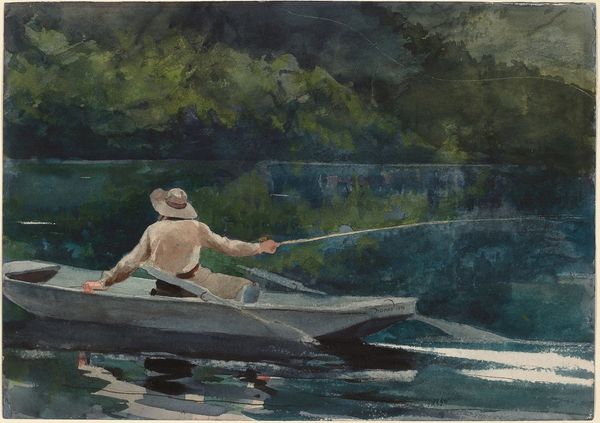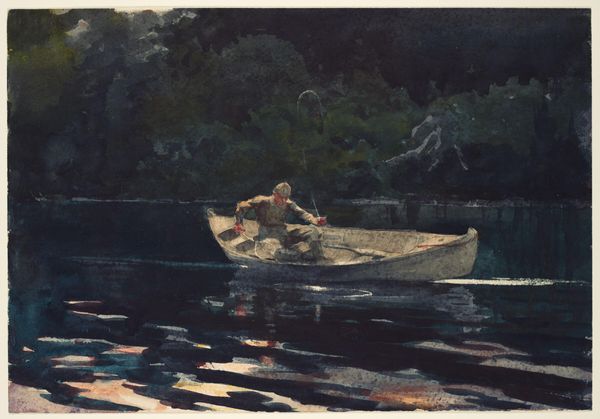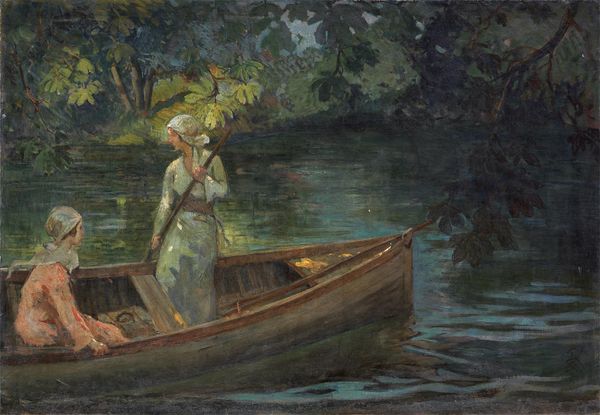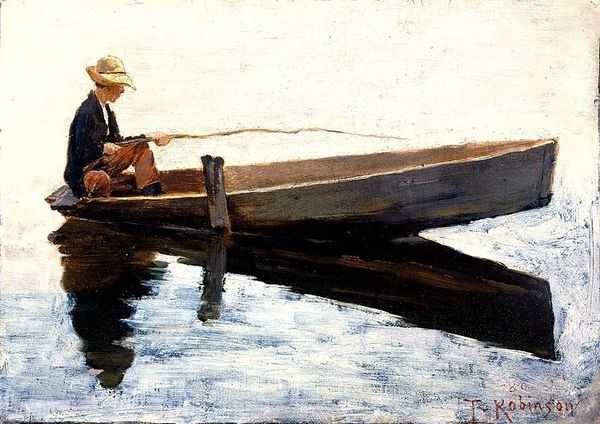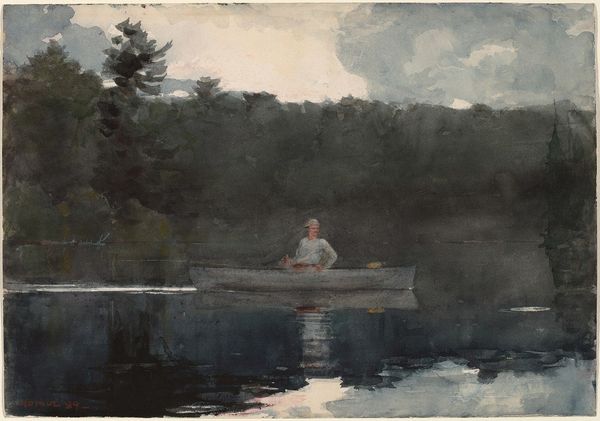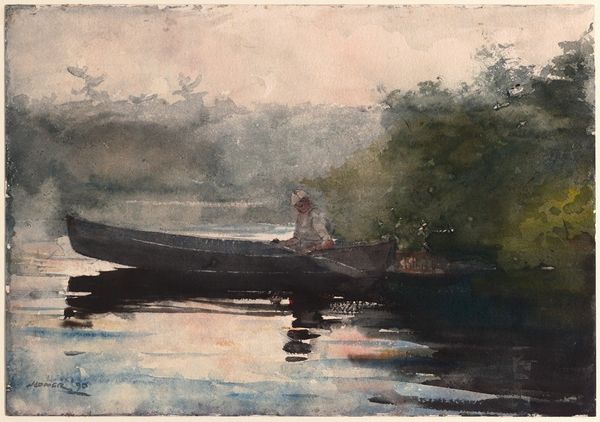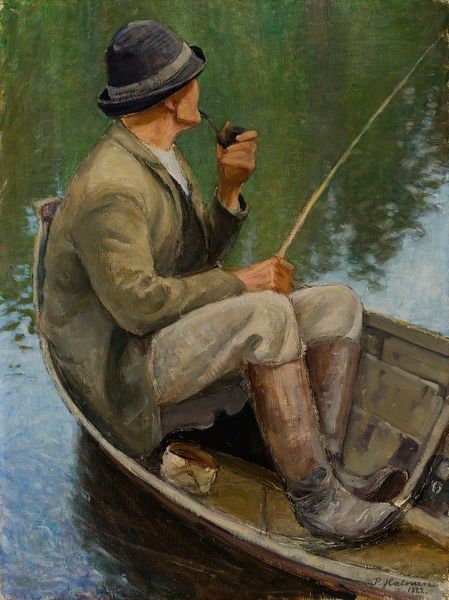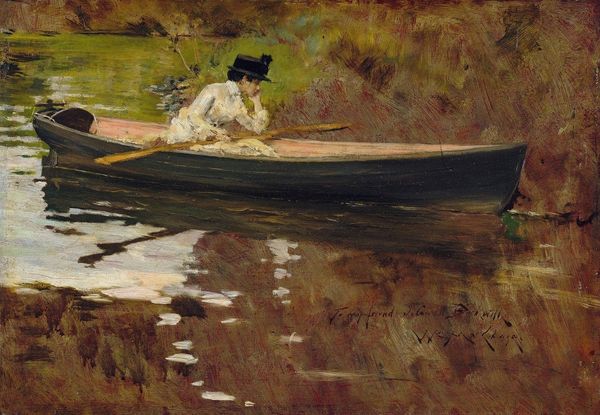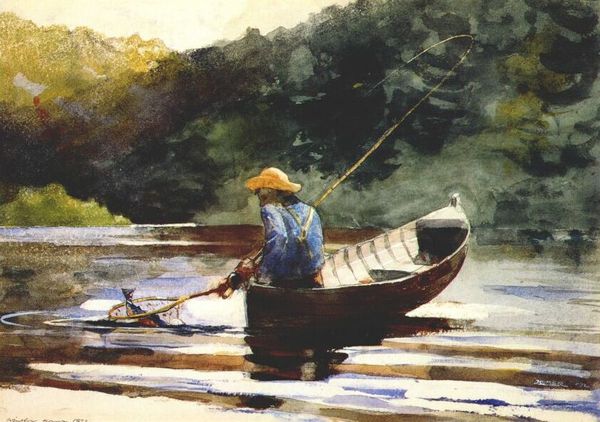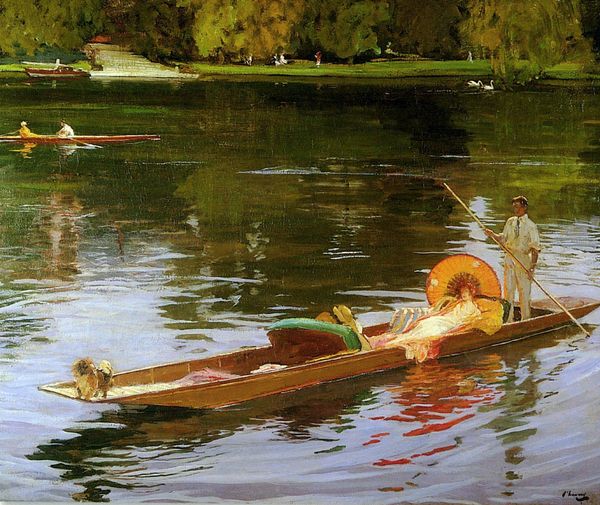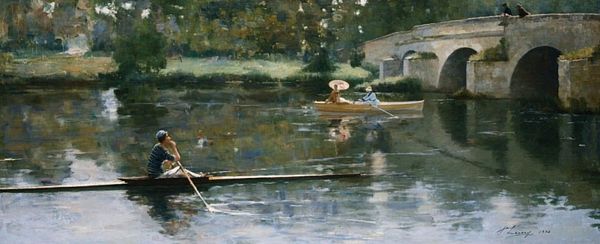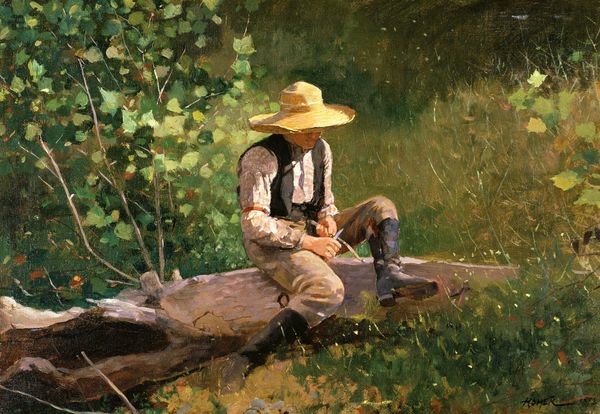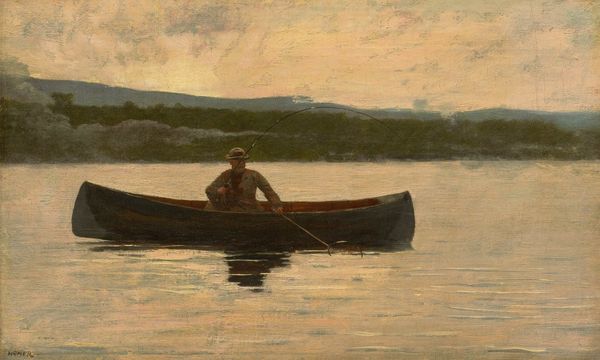
Copyright: Public Domain: Artvee
Art Historian: Editor: Editor: Here we have Winslow Homer's "After the Hunt," created in 1892. It's a watercolor painting. I’m immediately struck by how subdued the colors are, almost monochromatic, which gives it a rather somber mood. The figures seem very still. What draws your eye when you look at this piece? Art Historian: The immediate formal element that captivates is the masterful application of watercolor. Notice the strategic use of washes. Homer’s ability to evoke texture and form with such fluid medium speaks volumes about his technical command. Are you sensing a clear hierarchy within its composition? Editor: Definitely. The two figures and the dog in the boat form a central triangle, drawing focus. The dark background almost frames them. But what's the significance of this particular arrangement? Art Historian: Consider how the muted palette enhances this sense of containment, focusing our attention on the figures' postures and interrelationships. How do these muted tones and closed composition effect meaning in terms of line and colour as pure form? Editor: They seem defeated, almost burdened. Perhaps they weren't so successful in their hunt. Art Historian: Note how the interplay between light and shadow articulates the weight and mass of figures versus the limpid transparency of the lake in foreground. It emphasizes surface appearance as art object as well as being a view into social relationships and a sporting occupation. The eye then interprets this image as a network of lines and fields of pure sensation. Did you notice Homer creates depth of field here? Editor: Now that you mention it, I see how he suggests depth with varying color densities. Art Historian: Indeed. By reducing nature to its essence, it gives us pure emotion using color values as form to direct our attention to the image as an aesthetic form as its true reality, its significance and not anecdote Editor: That gives me a lot to reflect on, looking at how the elements work together regardless of the painting's subject. Art Historian: Precisely. Appreciating the form unlocks deeper understanding.
Comments
No comments
Be the first to comment and join the conversation on the ultimate creative platform.
